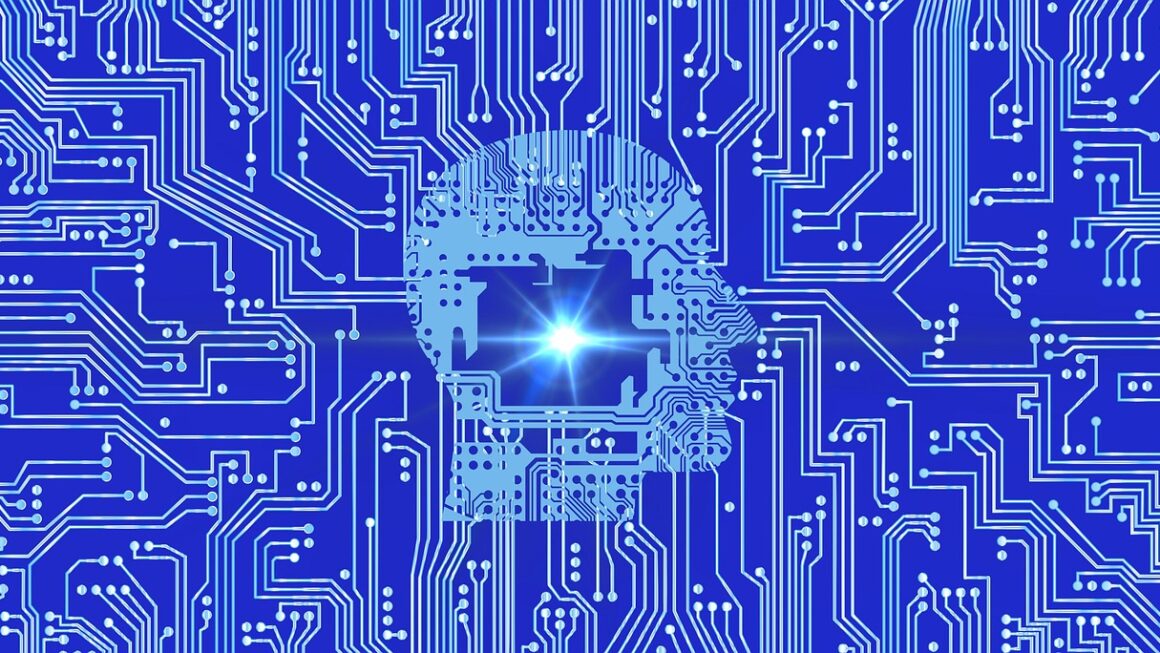Imagine a digital apprentice, eager to learn and master complex tasks, from composing symphonies to predicting market trends. That’s essentially what an AI model is before it undergoes rigorous training. AI model training is the process of feeding vast amounts of data to an algorithm, allowing it to identify patterns, make predictions, and ultimately, perform specific tasks with increasing accuracy. Let’s delve into the intricacies of this crucial process.
Understanding AI Model Training
What is AI Model Training?
AI model training is the process of teaching an artificial intelligence model to perform a specific task. This involves exposing the model to a dataset relevant to the desired task and allowing the model to adjust its internal parameters to improve its performance. Think of it as teaching a student: you provide examples, offer feedback, and monitor their progress until they can independently solve problems.
- Key Components:
Data: The fuel that powers the training process. The quality and quantity of data directly impact the model’s performance.
Algorithm: The learning method used by the model. Different algorithms are suited for different types of tasks.
Computing Power: The resources needed to process the data and update the model’s parameters. Powerful hardware, like GPUs, significantly accelerates training.
Evaluation Metrics: Used to assess the model’s performance during training and identify areas for improvement. Examples include accuracy, precision, and recall.
Different Types of AI Training
There are several different approaches to AI model training, each with its own strengths and weaknesses. Choosing the right approach is crucial for achieving optimal results.
- Supervised Learning: The model is trained on labeled data, where the input and the desired output are provided. This allows the model to learn the relationship between the input and output.
Example: Training a model to classify images of cats and dogs using a dataset where each image is labeled as either “cat” or “dog.”
- Unsupervised Learning: The model is trained on unlabeled data, where the model must discover patterns and relationships on its own.
Example: Using clustering algorithms to segment customers based on their purchasing behavior without pre-defined customer segments.
- Semi-Supervised Learning: A combination of supervised and unsupervised learning, where the model is trained on a dataset that contains both labeled and unlabeled data. This approach is useful when labeling data is expensive or time-consuming.
Example: Training a sentiment analysis model using a small set of labeled tweets and a much larger set of unlabeled tweets.
- Reinforcement Learning: The model learns by interacting with an environment and receiving rewards or penalties for its actions. This approach is often used for training agents to play games or control robots.
Example: Training an AI to play chess by rewarding it for making good moves and penalizing it for making bad moves.
Preparing Data for AI Model Training
Data Collection and Cleaning
The foundation of any successful AI model is high-quality data. Garbage in, garbage out!
- Data Collection: Gathering data from various sources, such as databases, APIs, web scraping, and sensor data.
- Data Cleaning: Addressing issues like missing values, inconsistencies, and outliers. Common techniques include:
Imputation: Replacing missing values with estimated values (e.g., mean, median, or mode).
Outlier Removal: Identifying and removing or transforming extreme values that could skew the model’s results.
Data Type Conversion: Ensuring all data is in the correct format (e.g., converting strings to numbers).
Feature Engineering and Selection
Once the data is clean, the next step is to prepare it for the model.
- Feature Engineering: Creating new features from existing ones to improve the model’s performance. For instance, combining multiple columns into a single, more informative feature. Example: From date of birth, generate “age”.
- Feature Selection: Choosing the most relevant features to use in the model. Irrelevant or redundant features can hinder performance and increase training time. Common Techniques include:
Filter Methods: Using statistical measures to rank features based on their relevance.
Wrapper Methods: Evaluating different subsets of features by training and evaluating the model on each subset.
Embedded Methods: Feature selection is performed as part of the model training process.
Data Splitting
To properly evaluate your model, the data needs to be split into three sets:
- Training Set: Used to train the model. Typically the largest set (e.g., 70-80% of the data).
- Validation Set: Used to tune the model’s hyperparameters and prevent overfitting during training. (e.g., 10-15% of the data).
- Test Set: Used to evaluate the final performance of the trained model on unseen data. (e.g., 10-15% of the data).
The Training Process: A Step-by-Step Guide
Choosing the Right Algorithm
Selecting the appropriate algorithm is crucial for successful AI model training. The choice depends on the type of problem you’re trying to solve, the type of data you have, and the desired level of accuracy.
- Regression: Predicting continuous values (e.g., predicting house prices). Common algorithms include Linear Regression, Support Vector Regression, and Decision Tree Regression.
- Classification: Categorizing data into different classes (e.g., classifying emails as spam or not spam). Common algorithms include Logistic Regression, Support Vector Machines, and Naive Bayes.
- Clustering: Grouping similar data points together (e.g., segmenting customers based on their purchasing behavior). Common algorithms include K-Means Clustering and Hierarchical Clustering.
- Neural Networks: Complex algorithms that can learn complex patterns from data. Often used for image recognition, natural language processing, and other tasks.
Setting Hyperparameters
Hyperparameters are parameters that control the learning process of the model. They are set before training and can significantly impact the model’s performance.
- Learning Rate: Controls how much the model adjusts its parameters during each iteration of training.
- Number of Epochs: The number of times the model iterates over the entire training dataset.
- Batch Size: The number of data points used in each iteration of training.
- Regularization Parameters: Used to prevent overfitting by adding a penalty to complex models.
Monitoring and Evaluation
During training, it’s crucial to monitor the model’s performance and make adjustments as needed.
- Loss Function: Measures the difference between the model’s predictions and the actual values. The goal is to minimize the loss function.
- Evaluation Metrics: Used to assess the model’s performance on the validation set. Examples include:
Accuracy: The percentage of correct predictions.
Precision: The percentage of positive predictions that are actually correct.
Recall: The percentage of actual positive cases that are correctly predicted.
F1-Score: The harmonic mean of precision and recall.
- Visualizations: Plotting the loss function and evaluation metrics over time can help identify potential problems, such as overfitting or underfitting.
Optimizing AI Model Performance
Hyperparameter Tuning
Finding the optimal set of hyperparameters is critical for achieving the best possible performance.
- Grid Search: Trying out all possible combinations of hyperparameters within a specified range.
- Random Search: Randomly sampling hyperparameters from a specified distribution.
- Bayesian Optimization: Using Bayesian methods to efficiently search for the optimal hyperparameters.
Addressing Overfitting and Underfitting
- Overfitting: The model performs well on the training data but poorly on unseen data. This can be mitigated by:
Increasing the amount of training data.
Using regularization techniques.
Simplifying the model.
Using Dropout layers in neural networks.
- Underfitting: The model performs poorly on both the training data and unseen data. This can be mitigated by:
Increasing the complexity of the model.
Training for a longer period of time.
* Adding more features to the data.
Transfer Learning
Leveraging pre-trained models can significantly reduce training time and improve performance, especially when dealing with limited data.
- Pre-trained Models: Models that have been trained on a large dataset, such as ImageNet or Wikipedia.
- Fine-tuning: Adapting a pre-trained model to a specific task by training it on a smaller dataset.
- Feature Extraction: Using the pre-trained model to extract features from the data and then training a simpler model on those features.
Tools and Technologies for AI Model Training
Popular Frameworks and Libraries
- TensorFlow: A powerful open-source library developed by Google for building and training AI models. Offers extensive features, including support for neural networks, deep learning, and GPU acceleration.
- PyTorch: Another popular open-source library, known for its flexibility and ease of use. Provides excellent support for dynamic computation graphs and GPU acceleration.
- Scikit-learn: A comprehensive library for machine learning tasks, including classification, regression, clustering, and dimensionality reduction. Easy to use and well-documented.
- Keras: A high-level API that simplifies the process of building and training neural networks. Can be used with TensorFlow, PyTorch, or other backend engines.
Cloud-Based Training Platforms
- Google Cloud AI Platform: Provides a comprehensive suite of tools and services for building, training, and deploying AI models.
- Amazon SageMaker: A fully managed machine learning service that enables you to quickly and easily build, train, and deploy machine learning models at scale.
- Microsoft Azure Machine Learning: A cloud-based platform that offers a wide range of tools and services for building and deploying AI models.
Hardware Acceleration: GPUs and TPUs
- GPUs (Graphics Processing Units): Designed for parallel processing, making them ideal for accelerating the training of AI models, especially neural networks.
- TPUs (Tensor Processing Units): Custom-designed hardware accelerators developed by Google specifically for machine learning workloads. Offer significant performance advantages over GPUs for certain types of models.
Conclusion
AI model training is a complex but essential process for building intelligent systems. By understanding the different types of training, properly preparing your data, choosing the right algorithms, and optimizing model performance, you can create powerful AI solutions that address real-world problems. Keep exploring, experimenting, and refining your techniques, and you’ll be well on your way to mastering the art of AI model training. The landscape of AI is constantly evolving, so continuous learning and adaptation are key to staying ahead.




